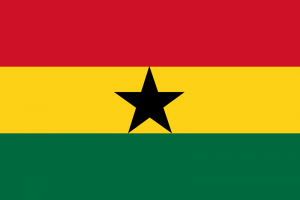Language/Twi/Vocabulary/Seasons-and-Climate
| ◀️ Weather Vocabulary — Previous Lesson | Next Lesson — Common Prepositions ▶️ |
Introduction[edit | edit source]
In this lesson, we will explore the Twi vocabulary for seasons and climate. Understanding these words is essential for being able to talk about weather patterns and seasonal changes in Twi. By the end of this lesson, you will have a solid foundation in the Twi words related to seasons and climate, and you will be able to confidently discuss weather conditions in Twi.
Seasons and Climate in Twi[edit | edit source]
Twi, like many other languages, has specific words to describe the different seasons and weather conditions. Let's start by learning the Twi words for the four seasons:
The Four Seasons[edit | edit source]
Here are the Twi words for the four seasons:
| Twi | Pronunciation | English Translation |
|---|---|---|
| Afiye | [a-fi-yɛ] | Spring |
| Ahinime | [a-hi-ni-me] | Summer |
| Adaduanan | [a-da-du-a-nan] | Autumn/Fall |
| Anɔpa | [a-nɔ-pa] | Winter |
These words will help you to identify and discuss the different seasons in Twi-speaking regions. For example, you can say "Meyɛ Afiye no" to mean "It is spring."
Weather Vocabulary[edit | edit source]
Now let's move on to the Twi vocabulary for various weather conditions. Here are some common weather-related words in Twi:
| Twi | Pronunciation | English Translation |
|---|---|---|
| Anigye | [a-ni-gye] | Sunny |
| Ahwedeɛ | [a-hwe-de-ɛ] | Cloudy |
| Nsuo | [n-su-o] | Rain |
| Ahum | [a-hum] | Fog |
| Ahohoro | [a-ho-ho-ro] | Windy |
| Akwan | [ak-wan] | Cold |
| Ahuru | [a-hu-ru] | Hot |
With these words, you can describe the weather conditions in Twi. For example, you can say "Nsuo nso yɛɛ" to mean "It is raining."
Talking about Seasons and Weather[edit | edit source]
To talk about the weather in a specific season, you can combine the words for the season and the weather condition. Here are some examples:
- "Afiye no Anigye" - It is sunny in spring.
- "Adaduanan no Ahum" - It is foggy in autumn.
- "Ahinime no Nsuo" - It is rainy in summer.
- "Anɔpa no Akwan" - It is cold in winter.
These examples demonstrate how you can use the Twi vocabulary for seasons and weather to describe the current weather conditions in different seasons.
Cultural Insights[edit | edit source]
In Twi-speaking regions, the seasons and weather patterns have a significant impact on daily life and cultural practices. For example, during the rainy season, farmers rely on the rainfall for their crops, and festivals and ceremonies often take place during specific seasons. Understanding the Twi words for seasons and climate not only helps with communication but also provides insights into the cultural significance of weather patterns in Twi-speaking communities.
In addition to the four main seasons, Twi culture also recognizes sub-seasons or periods within each season. These sub-seasons are known as "ɛfuom" in Twi. They represent distinct phases within a season and are often associated with specific weather conditions or cultural activities. Some examples of ɛfuom include:
- "Bram" - The period of heavy rain
- "Nsa" - The period of dry weather
- "Nkyene" - The period of cool weather
These sub-seasons provide a more nuanced understanding of the changes in weather and climate throughout the year and highlight the close relationship between nature and culture in Twi-speaking regions.
Practice Exercises[edit | edit source]
Now it's time to practice using the Twi vocabulary for seasons and climate. Complete the following exercises to reinforce your understanding:
Exercise 1: Match the Twi words with their English translations.
| Twi | English Translation |
|---|---|
| Afiye | Sunny |
| Ahinime | Cold |
| Adaduanan | Rainy |
| Anɔpa | Winter |
Exercise 2: Fill in the blanks with the appropriate Twi words for seasons and weather conditions. 1. __________ no Ahum. (It is foggy in autumn.) 2. __________ no Anigye. (It is sunny in spring.) 3. __________ no Nsuo. (It is rainy in summer.) 4. __________ no Akwan. (It is cold in winter.)
Solutions[edit | edit source]
Exercise 1: 1. Afiye - Sunny 2. Ahinime - Cold 3. Adaduanan - Rainy 4. Anɔpa - Winter
Exercise 2: 1. Adaduanan no Ahum. (It is foggy in autumn.) 2. Afiye no Anigye. (It is sunny in spring.) 3. Ahinime no Nsuo. (It is rainy in summer.) 4. Anɔpa no Akwan. (It is cold in winter.)
Conclusion[edit | edit source]
Congratulations! You have successfully learned the Twi vocabulary for seasons and climate. You can now confidently talk about weather patterns and seasonal changes in Twi. Remember to practice using these words in everyday conversations to reinforce your learning. Understanding the cultural significance of seasons and weather in Twi-speaking communities adds depth to your language skills and allows for a more immersive experience when communicating with Twi speakers. Keep up the great work!
Other Lessons[edit | edit source]
- Eating and Drinking
- Greetings
- Directions and Locations
- Numbers 11 20
- Greetings and Salutations
- Health
- Akan Calendar
- Weather Vocabulary
- How to Say Hello and Greetings
- Common Foods
| ◀️ Weather Vocabulary — Previous Lesson | Next Lesson — Common Prepositions ▶️ |

